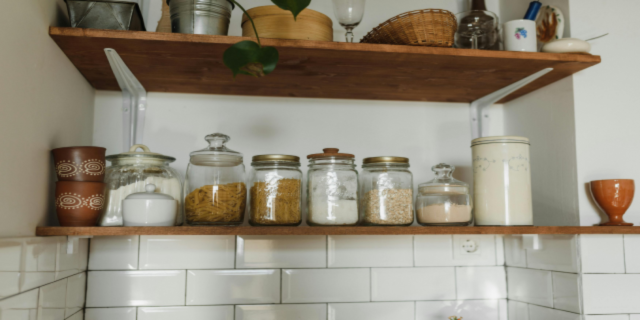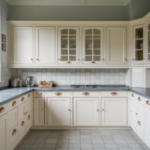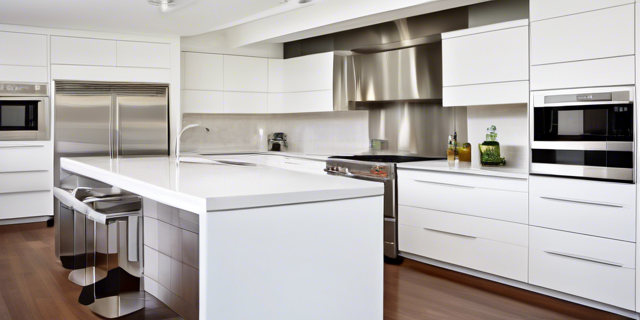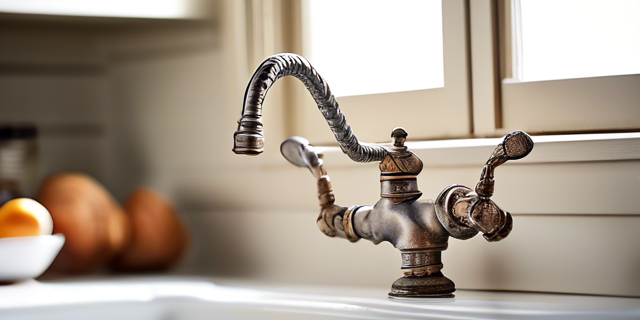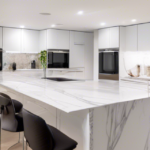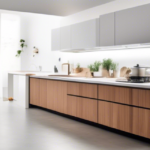Floating kitchen shelves have taken the interior design world by storm, and for good reason! They’re a stylish, functional, and modern way to display your kitchen essentials while freeing up valuable counter space. In this article, we’ll explore everything you need to know about floating kitchen shelves—from their benefits to how to install and style them. Let’s dive in!
What are Floating Kitchen Shelves?
If you’re not familiar with the term, floating kitchen shelves are shelves that are mounted to the wall without visible supports, giving the illusion that they are “floating.” This minimalist look not only adds an open feel to your kitchen but also allows you to showcase decorative items, cookbooks, and more. They come in various materials, sizes, and styles, making them adaptable to any kitchen design. For more detailed guide on kitchen cabinets checkout this guide.
Benefits of Floating Kitchen Shelves
Floating shelves aren’t just trendy; they offer several practical benefits that make them an excellent choice for any kitchen.
Space-Saving Solution
First and foremost, floating shelves are a fantastic space-saving solution. If your kitchen is on the smaller side, traditional cabinets can make it feel even more cramped. By installing floating shelves, you can utilize vertical space, giving your kitchen a more open and airy feel. Plus, you can easily store items you use frequently within arm’s reach!
Aesthetic Appeal
Not only do they save space, but floating shelves also enhance the overall aesthetic appeal of your kitchen. They create a sleek and modern look that can elevate any design. Whether you prefer a rustic wooden finish or a contemporary glass shelf, there’s a floating shelf option that will fit your style perfectly.
Easy Installation
One of the best parts? Floating shelves are relatively easy to install. Even if you’re not a DIY pro, you can tackle this project with just a few tools and a little bit of patience.
Versatility
Floating shelves are versatile, too! They can be used in various ways—from holding spices and oils to displaying beautiful dishware. Use them as a makeshift pantry or to create a mini coffee bar. The options are endless!
Choosing the Right Floating Shelves
Now that you’re sold on floating shelves, how do you choose the right ones? Here are a few factors to consider before making a purchase.
Material Options
When it comes to materials, you have several choices. Wood is a classic option that adds warmth to your kitchen, while metal gives a more industrial vibe. Glass shelves can create a lighter look, but they may require more maintenance to keep them clean. Think about your kitchen style and what material will complement it best.
Size and Dimensions
Size matters! Before buying, measure your available wall space to ensure your shelves will fit perfectly. Consider how much weight they need to hold and the items you plan to display. There’s no one-size-fits-all solution, so take your time here.
Installation Tips for Floating Shelves
Ready to install your floating shelves? Here’s a step-by-step guide to get you started.
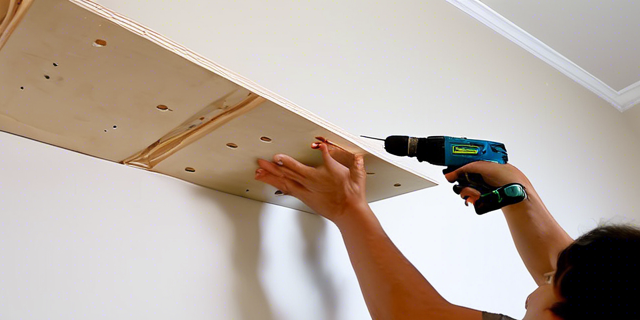
Tools You’ll Need
You’ll need some basic tools: a level, a drill, screws, wall anchors, and a stud finder. These tools will help ensure your shelves are sturdy and level.
Finding the Right Spot
Choose the best spot for your shelves. Think about accessibility and visibility. A common mistake is placing them too high or too low. Ideally, your floating shelves should be at eye level for easy access to your items.
Leveling and Anchoring
Once you have your spot, it’s time to install. Start by marking where your shelves will go, then use the level to ensure everything is straight. Don’t forget to anchor the shelves into wall studs for maximum support! This is especially important if you plan to store heavier items.
Styling Your Floating Shelves
Now comes the fun part—styling your shelves! Here are some creative ways to make them pop.
If you’re looking for ways to complement your floating shelves with cabinetry, consider exploring Elegant White Oak Kitchen Cabinets: Enhance Your Kitchen’s Look. This post provides excellent insights on how to choose cabinets that can beautifully coordinate with your floating shelves, creating a cohesive and stylish look in your kitchen.
Functional Decor
Mix practicality with aesthetics. Use beautiful jars for storing dry goods, display your favorite cookbooks, or add a plant for some greenery. The key is to find a balance between functional and decorative items.
Seasonal Decor Ideas
Want to keep things fresh? Change your decor with the seasons! Add autumn-themed decorations in the fall and bright flowers in the spring. This keeps your kitchen feeling lively and welcoming throughout the year.
Common Mistakes to Avoid
While installing and styling your floating shelves, watch out for some common pitfalls. One mistake is overcrowding the shelves. Remember, less is more! Aim for a clean and organized look rather than cramming every available space. Another is neglecting the balance—try to distribute items evenly for a harmonious appearance.
Maintaining Your Floating Shelves
Floating shelves can be low maintenance, but they do require some care. Regularly dusting and cleaning them will keep them looking fresh. If you’ve opted for wooden shelves, consider treating them occasionally to maintain their finish and prevent wear.
Conclusion
In conclusion, floating kitchen shelves are an excellent addition to any kitchen. They not only save space but also provide an opportunity to showcase your personal style. With a bit of planning, installation, and creative styling, you can transform your kitchen into a functional and beautiful space. So, why not give it a try?
FAQs
The weight capacity depends on the material and how well they’re installed, but generally, well-installed shelves can hold 20-30 pounds.
Yes! With basic tools and a little patience, you can install floating shelves yourself. Just follow the right steps.
Absolutely! Floating shelves are perfect for small kitchens as they save space and create an open feel.
Use a damp cloth and mild detergent to wipe down the shelves regularly, especially if they hold food items.
You can display cookbooks, decorative jars, plants, and even dishware. Just be sure to balance aesthetics and functionality!
